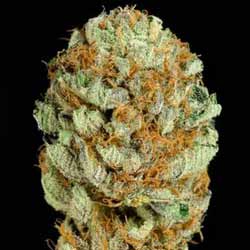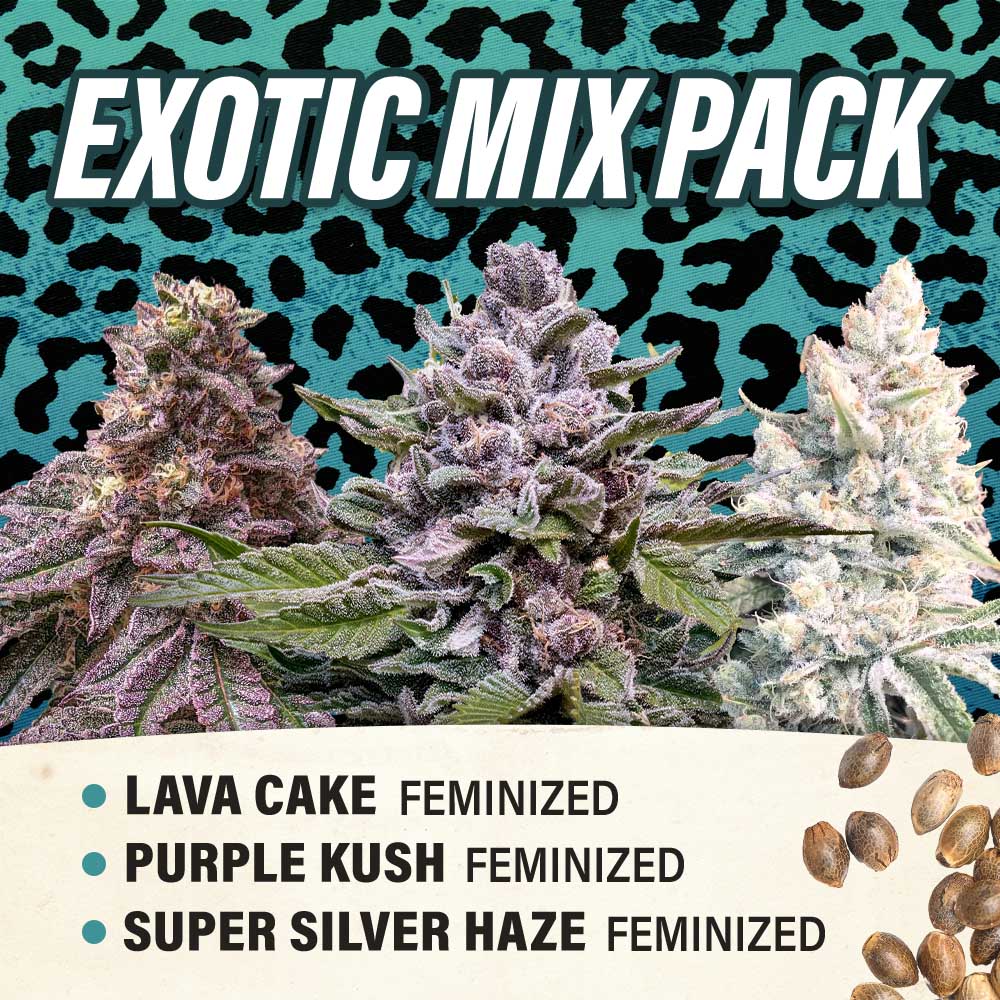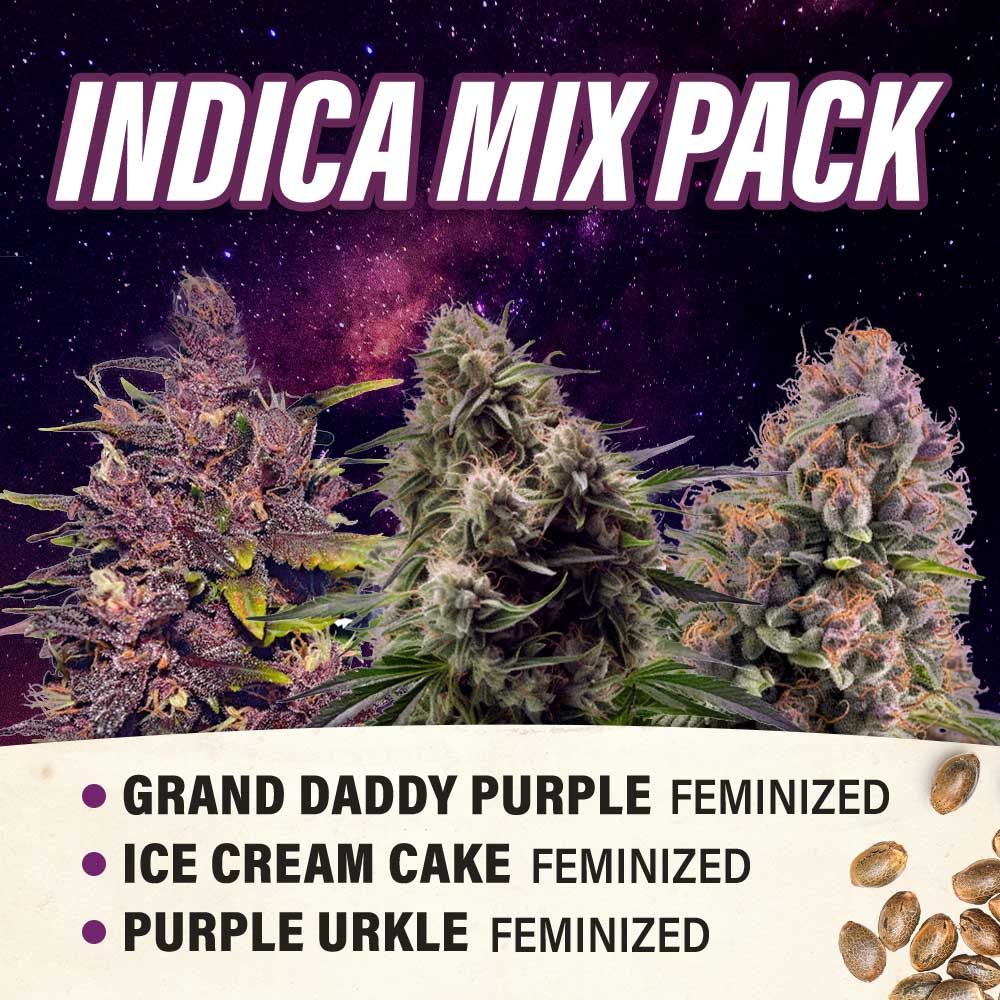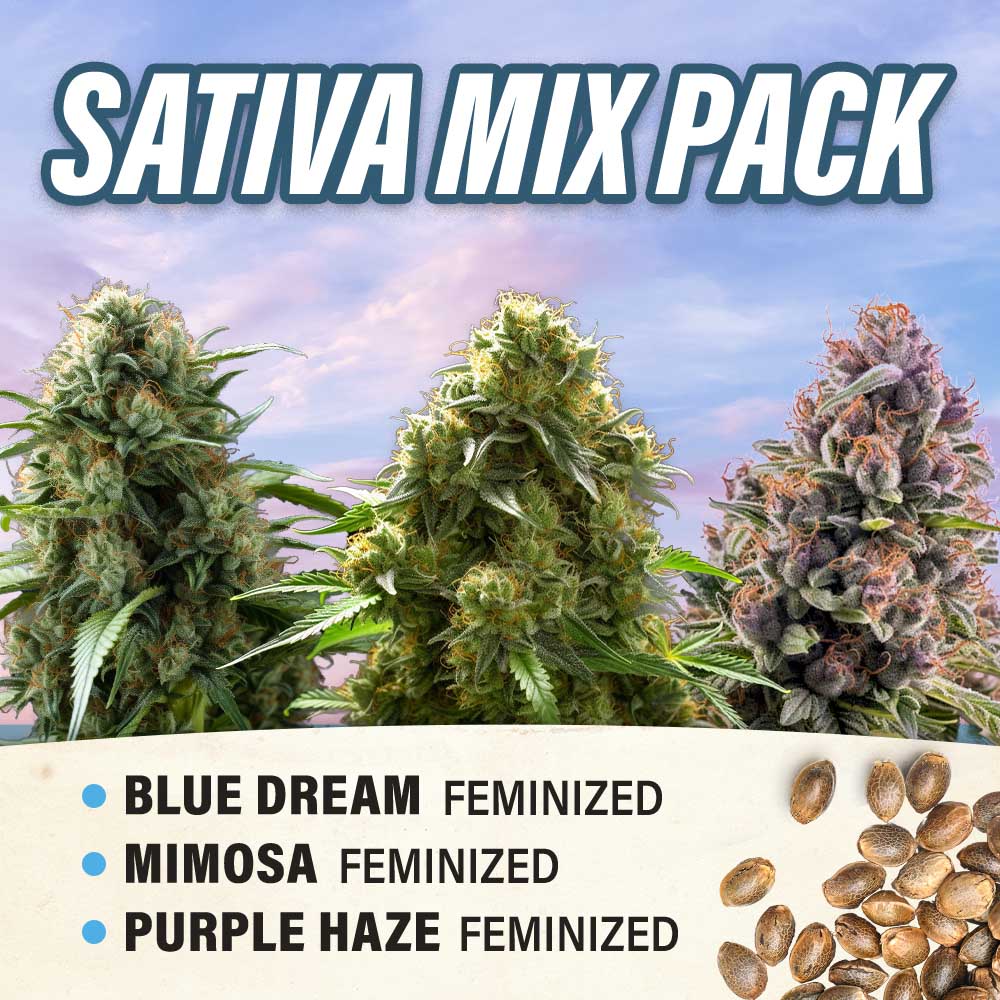How to Grow Marijuana Indoors: 8 Easy Steps for Beginners
Growing marijuana indoors is a rewarding way to gain more control over your plants and produce high-quality cannabis at home. Whether you’re starting with cannabis seeds or seedlings, this beginner-friendly guide will walk you through each step of the process to help you achieve a successful grow from seed to harvest.
Table of Contents
How to Grow Marijuana Indoors
Growing marijuana indoors gives you the ability to manage every part of the plant’s environment—from lighting to nutrients—resulting in a more consistent and high-quality final product. If you’re new to growing cannabis, this guide will help you get started step by step with the basics.
1. What materials do you need to grow cannabis indoors?
Before you begin, gather these essentials to ensure your indoor growing setup runs smoothly:
- Cannabis seeds (preferably feminized seeds for better yield)
- Grow tent or dedicated grow space
- Grow light (LED lights are energy efficient and popular among beginners)
- Soil or growing medium (choose high-quality soil or coco coir)
- Pots or fabric pots (for good root aeration)
- Ventilation fan (to bring in fresh air and control temperature)
- Timer (to automate the light cycle)
- pH meter (to monitor water and nutrient levels)
- Nutrients (basic cannabis nutrients for veg and flowering stages)
- Thermometer and hygrometer (to monitor heat and humidity)
2. How do you germinate cannabis seeds?
Start with seed germination by placing cannabis seeds between damp paper towels in a warm, dark spot. Once the seed cracks and a small root appears, plant it about ½ inch deep in your growing medium. Keep the soil moist with just water and place under low-intensity light until seedlings emerge.
3. How should you set up your grow space?
Use a grow tent or dedicated grow area with reflective walls to make the most of your lighting. Install LED grow lights a few inches above your plants and set up fans for air circulation to prevent hot air buildup. Make sure your setup allows you to control temperature, humidity, and light easily.
4. What is the ideal environment for indoor cannabis?
Marijuana plants grow best with temperatures between 70–85°F (20–29°C) and humidity around 40–60%. Fresh air is essential, so good ventilation is key. Use fans to mimic wind and strengthen the stems, while preventing issues like bud rot during the flowering stage.
5. How does the light cycle affect plant growth?
During the vegetative stage, cannabis plants require 18–20 hours of blue light daily. When you’re ready to trigger flowering, switch to a 12/12 light cycle—12 hours of intense light and 12 hours of darkness. This shift mimics outdoor growing conditions and initiates the flowering stage.
6. How do you feed and water your plants?
Stick to a feeding schedule using nutrients suited for each stage. During the vegetative phase, focus on nitrogen-rich nutrients. In the flowering stage, gradually increase phosphorus and potassium. Always check your water with a pH meter—aim for a range of 6.0–7.0 in soil to avoid nutrient lockout.
7. When and how do you harvest?
Harvest when the flowering plants show milky or amber-colored trichomes using a magnifying lens. Cut down the marijuana plants and begin the drying process in a cool, dark space with good airflow. Proper drying and curing improve the final product’s flavor, potency, and smoothness.
8. How can you increase yield and avoid common mistakes?
To increase yield, use proper lighting, manage temperature, and prune unnecessary fan leaves to let light reach bud sites. Avoid overwatering or overfeeding. Monitor your plants closely during each stage, and stay consistent throughout the growing cycle for the best results.
Advantages of Growing Cannabis Indoors
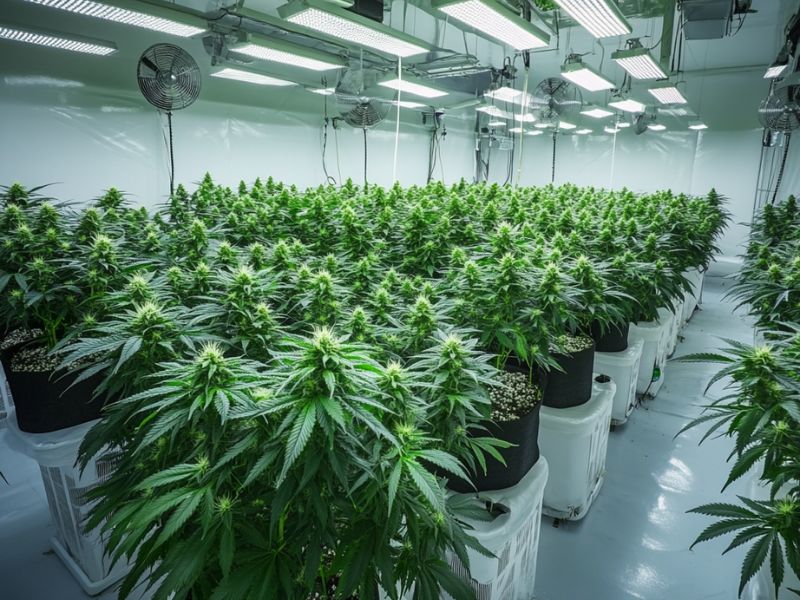
Indoor growing offers cannabis enthusiasts more control over their environment, leading to more consistent and high-quality yields. Here are the key benefits of growing cannabis indoors:
- More control: Indoor growers can adjust temperature, humidity, light cycle, and airflow to suit each stage of the cannabis plant’s life.
- Year-round cultivation: Unlike outdoor growing, indoor setups aren’t limited by seasons, allowing you to grow cannabis indoors at any time of year.
- Higher quality buds: With stable conditions and intense light, indoor cannabis often produces denser, more potent buds than outdoor-grown plants.
- Fewer pests and diseases: Growing marijuana indoors minimizes exposure to common outdoor threats like insects, mold, and harsh weather.
- Privacy and security: Indoor growing is discreet and easier to keep private, especially important in regions with stricter regulations.
- Faster growth cycles: By managing the growing cycle closely, you can shorten the time from seed to harvest and even grow multiple batches per year.
Indoor Vs Outdoor Marijuana Growing
Choosing between indoor and outdoor marijuana growing depends on your goals, resources, and environment. The table below compares the key differences to help you decide which method best fits your needs as a grower.
|
Factor |
Indoor Growing |
Outdoor Growing |
|
Control |
Full control over environment and light cycle |
Dependent on natural conditions |
|
Growing season |
Year-round |
Limited to spring through fall |
|
Startup cost |
Higher due to equipment and electricity |
Lower, using natural light and climate |
|
Plant quality |
Denser, more potent buds with intense light |
Larger plants, but may vary in quality |
|
Security & privacy |
Easier to conceal and secure |
Visible and exposed to neighbors or passersby |
|
Risk of pests/disease |
Lower due to controlled environment |
Higher due to outdoor exposure |
|
Yield size |
Moderate with controlled yield |
Can produce larger yields depending on climate |
|
Energy use |
Requires electricity for lights and fans |
Powered by sunlight—more energy efficient |
|
Best for |
Urban or small-space growers |
Those with access to private outdoor land |
Expert Tips for Indoor Marijuana Cultivation
Once you’ve mastered the basics, these expert tips can help you refine your indoor growing process and maximize your plant’s potential.
- Use a quality growing medium: Choose soil rich in organic matter or a hydroponic setup that supports healthy root development and nutrient absorption.
- Monitor temperature and humidity closely: Keep your grow space between 70–85°F and adjust humidity as plants grow—higher for seedlings, lower during flowering.
- Train your plants: Techniques like low-stress training (LST) or topping help light reach more bud sites and can significantly increase yield.
- Avoid light leaks: During the flowering stage, make sure your grow tent is completely dark during the “off” hours to prevent stress or reverting to the vegetative stage.
- Use oscillating fans: Good airflow strengthens stems and prevents hot air buildup, while reducing risks of mold, bud rot, and pests.
- Flush before harvest: In the last 1–2 weeks before harvest, flush plants with just water to remove built-up nutrients and improve the final taste.
Final Thoughts
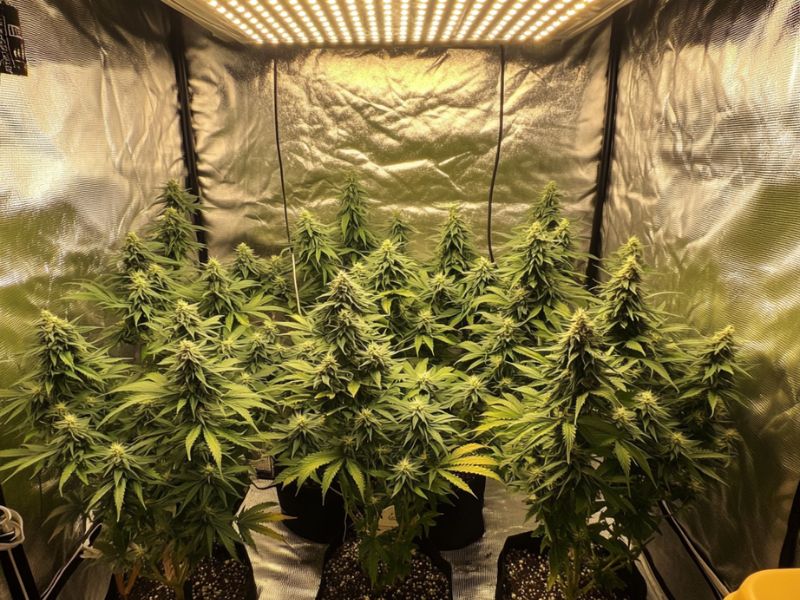
Indoor marijuana cultivation offers beginners and seasoned growers alike a chance to produce high-quality cannabis with full control over the environment. With the right tools, patience, and a little practice, you can grow healthy, productive plants right at home. Ready to grow cannabis indoors? Start small, stay consistent, and enjoy the process. Now that you know the basics, put your knowledge into action and enjoy the satisfaction of growing your own cannabis indoors.
Frequently Asked Questions
How long does it take to grow marijuana indoors?
The full indoor growing cycle typically takes 3 to 5 months from seed to harvest, depending on the strain and grow conditions.
Can I grow marijuana indoors without a grow tent?
Yes, but a grow tent offers better control over light, temperature, and humidity, which are crucial for a successful grow.
How much light do cannabis plants need per day?
During the vegetative stage, cannabis plants need 18–20 hours of light daily. During flowering, they need exactly 12 hours of light and 12 hours of darkness.
Do I need special nutrients for growing cannabis?
Yes, cannabis requires specific nutrients during different stages—mainly nitrogen in the vegetative phase and phosphorus and potassium during flowering.
Is it better to start from seeds or clones?
Seeds (especially feminized seeds) are great for beginners and offer genetic variety, while clones provide a head start but require a healthy mother plant.
Related Posts
Cannabis Growth Chart: 4 Key Stages of Marijuana Growth
How to Grow Marijuana Indoors: 8 Easy Steps for Beginners
Mold on Pot Plant: What to Do and 8 Prevention Tips
CATEGORIES
Best Selling Seeds

